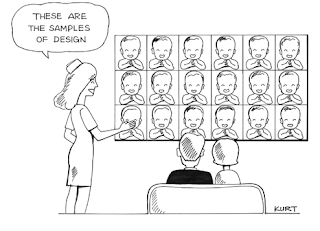You know that fertilizers help plants grow, they contain the nutrients plants need such as Nitrogen, Phosphorus and Potassium. Fertilizer is also composed of decaying plants, fish, bone, feces, etc. Well would you believe sewage plants also produce fertilizer? They produce a “fertilizer” known as biosolids, which are the byproduct of treated wastewater. There is much controversy to whether biosolids are good or bad.
First of all, what are biosolids? Biosolids are organic solids derived from biological wastewater treatment processes that are in a state where they can be used as nutrients and soil conditioning agents, a source of energy or some other use.
Biosolids are produced primarily through treatment of domestic wastewater in sewage plants. Biosolids comprise the solids that are removed from the wastewater and further processed before the treated water is released back into streams or rivers. Physical and chemical processes are often employed additionally to improve the biosolids characteristics, increase the economic growth of land application, and reduce the potential for public health and environmental problems associated with land application practices. These processes sanitize wastewater treatment solids to control disease-causing organisms and reduce characteristics that might attract rodents, flies, mosquitoes, or other organisms capable of transporting infectious disease. The type as well as the extent of the processes used to treat wastewater will affect the degree of pathogen reduction attained and the potential for odor generation.
Now let’s take a look at the pros and cons of using biosolids for fertilizer.
Pros:
- Recycles waste rather than filling landfills with more garbage
- Reduces gas emissions from transportation to landfills making it “healthier” for the environment in terms of air pollution.
- Contain nutrients such as nitrogen, phosphorus, zinc, calcium, copper and magnesium, which are all important for plant growth.
- Biosolids also contain organic matter which can improve the soil structure, reducing surface runoff and soil erosion.
- Promotes farming because of the large amounts of fertilizer produced
- Biosolids contain methane gas, through combustion the methane gas can be captured and when biosolids are broken down ash is a byproduct, both of which can be used to generate electricity.
Cons:
- Contamination of heavy metals, toxic organic compounds and pathogens or from accumulation of industrial waste
- True composition is unknown
- Possible contamination of food supply, the chemicals may transfer into the crops
- Potential health hazard
- Effects are irreversible
- Odor
Biosolids are considered to be unsanitary and disgusting by many, with the use of metals that are known to be potentially harmful to humans. They contain many chemicals which can transfer to crops, and ultimately if the contamination gets into the food supply, and even further to the consumers, the effects are irreversible. But these problems will only occur if the usage of biosolids is not correctly managed. If Biosolids are administered correctly, the risks become minute.
After considering both the pros and cons of using biosolids, can this be a realistic alternative to our current agricultural practices? Yes, biosolids can be a realistic alternative, the pros of biosolids far outweigh the cons. Overall biosolids are beneficial to both agricultural practices and the environment with proper management biosolids. Biosolids will help plants grow, improve soil structure, reduce pollution overall and health risks are not a concern when the use of biosolids is administered correctly.
Sources:
"Sludge, Sludge Treatment, Sludge Disposal, Sewage, Australian New Zealand Biosolids." Australian and New Zealand Biosolids Partnership. Web. 05 June 2011. <http://www.biosolids.com.au/what-are-biosolids.php>.
Reynolds, Laura. "What Is Fertilizer Made Of? | EHow.com." EHow | How to Videos, Articles & More - Trusted Advice for the Curious Life | EHow.com. Web. 05 June 2011. <http://www.ehow.com/facts_5095537_fertilizer-made.html>.
Sunday, Posted:. "Biosolids Stink: Why Waste Our Waste?" The Daily News - Longview, Washington. Web. 05 June 2011. <http://tdn.com/news/opinion/article_c286d348-8984-11e0-8b2c-001cc4c03286.html>.
"Biosolids.com | About Biosolids: Biosolids Benefits." _. Web. 05 June 2011. <http://www.biosolids.com/benefits.html>.
Janssen, Don. "What Are Biosolids?" University of Nebraska–Lincoln Extension in Lancaster County. Web. 05 June 2011. <http://lancaster.unl.edu/enviro/biosolids/whatare1.shtml>
Commented on:
http://claudia-d-123.blogspot.com/2010/12/biosolids-as-agricultural-fertilizer.html
http://waynebioblog.blogspot.com/2010/12/coprophagous-are-we.html





